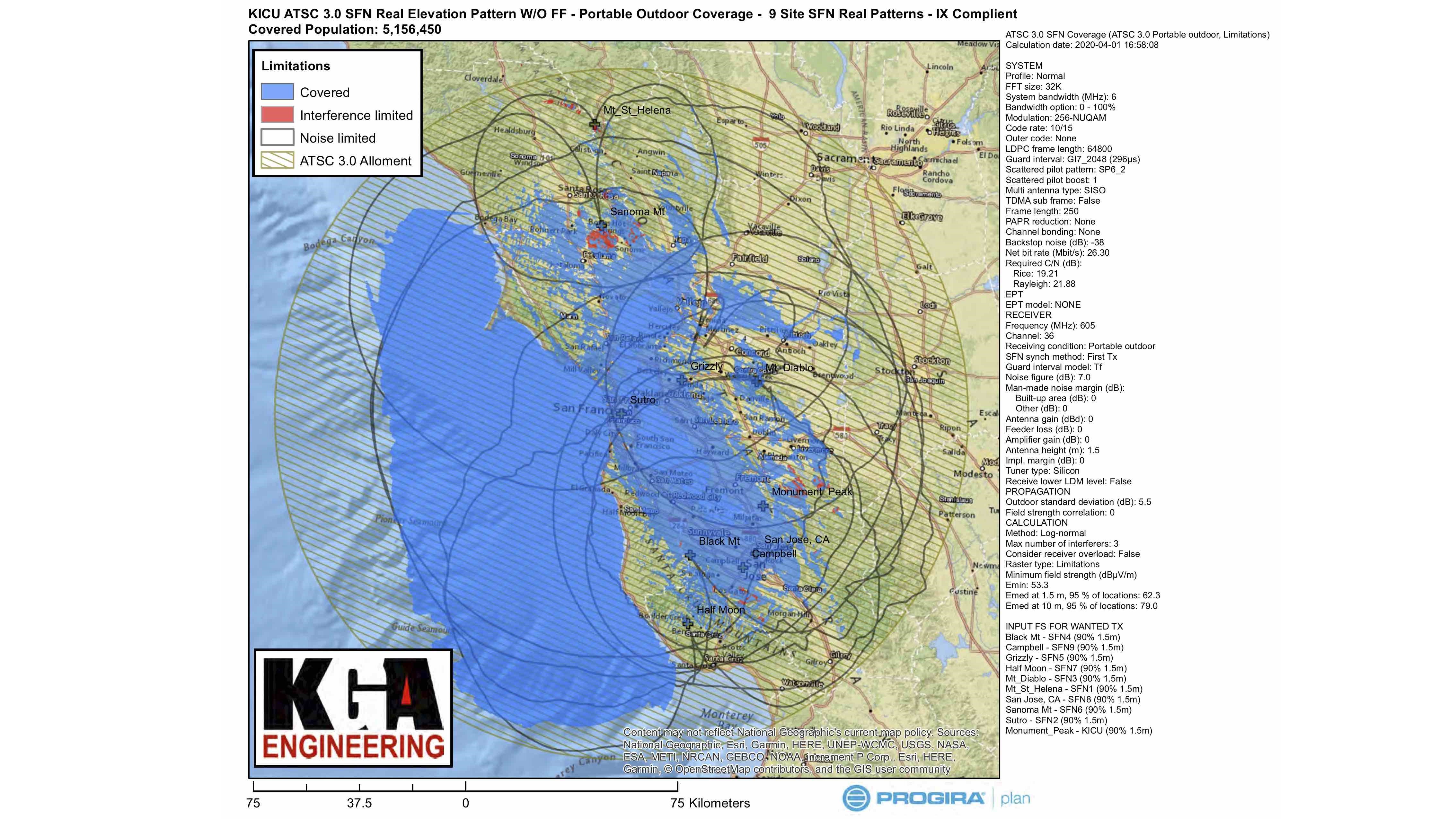KGA Taps Acrodyne’s Progira for NextGen TV Strategies
Kessler and Gehman Associates will use the software for 3.0 SFN planning

BALTIMORE—Broadcast industry consultant Kessler and Gehman Associates (KGA) is using Acrodyne Services’ Progira plan broadcast network planning software to help broadcasters develop their NextGen TV strategies, particularly to assist with single frequency network (SFN) planning, Acrodyne announced.
“We purchased Progira plan for a variety of projects around spectrum planning and optimization, but there’s no question that the main scope is for ATSC 3.0,” said Ryan Wilhour, consulting engineer at KGA.
The planning tool is used around the world by consultants and broadcasters to design broadcast networks with optimum reception probability. Over the past few months, Acrodyne has experienced increased sales of the tool in the United States as broadcasters near the end of the TV spectrum repack and begin planning ATSC 3.0 deployments, the company said.
Many broadcasters are considering SFNs for 3.0 as a transmission model—a stark change from the high-power big stick approach employed for ATSC 1.0 transmission. Progira plan offers a sophisticated toolset for SFN planning and helps consultants plan networks with multiple transmitter sites designed to reinforce each other for consistent market-wide reception and interference avoidance, said Andy Whiteside, general manager of Acrodyne Services and president of Dielectric. The tool assists users in understanding reception conditions and network timing requirements for mobile users, he added.
“The main benefit [of Progira] is the amount of time we save in planning SFN sites,” said Wilhour. “The software interfaces with the FCC LMS database and exports studies to TV Study for final FCC presentation.
“It automatically defines the appropriate antenna patterns and network timings,” he said. “No longer must the broadcast consultancy pull in antenna patterns, apply them to contours one by one, and evaluate if they remain within allotted coverage areas.
“The software integrates seamlessly with ArcMap geographic information systems (GIS) as well, and allows me to very quickly generate contours and their population counts,” he added.
However, not all broadcasters are considering SFNs for 3.0 deployment; some will rely on their conventional tall tower. The Progira plan is appropriate for reception prediction of both approaches, said Whiteside.
To date, KGA has put the Progira plan to work on a variety of projects, including SFN planning in San Francisco to model potential reception plans for several UHF TV channels and to plan a studio-to-transmitter microwave path profile for an ATSC 1.0 broadcaster.
“There is no question that we are finding new business and making money by using this software,” said Wilhour. “We have one client that is looking at ATSC 3.0 SFN plans for all major markets, and they understand the requirement for accurate coverage models. We can start with the basic metric analysis and then provide very detailed theoretical data that will help them accelerate network buildouts, from identifying proper antenna patterns to gaining construction permits. This software opens up many new business opportunities,” said Wilhour.
More information is available on the Acrodyne Services website.
Get the TV Tech Newsletter
The professional video industry's #1 source for news, trends and product and tech information. Sign up below.
Phil Kurz is a contributing editor to TV Tech. He has written about TV and video technology for more than 30 years and served as editor of three leading industry magazines. He earned a Bachelor of Journalism and a Master’s Degree in Journalism from the University of Missouri-Columbia School of Journalism.

